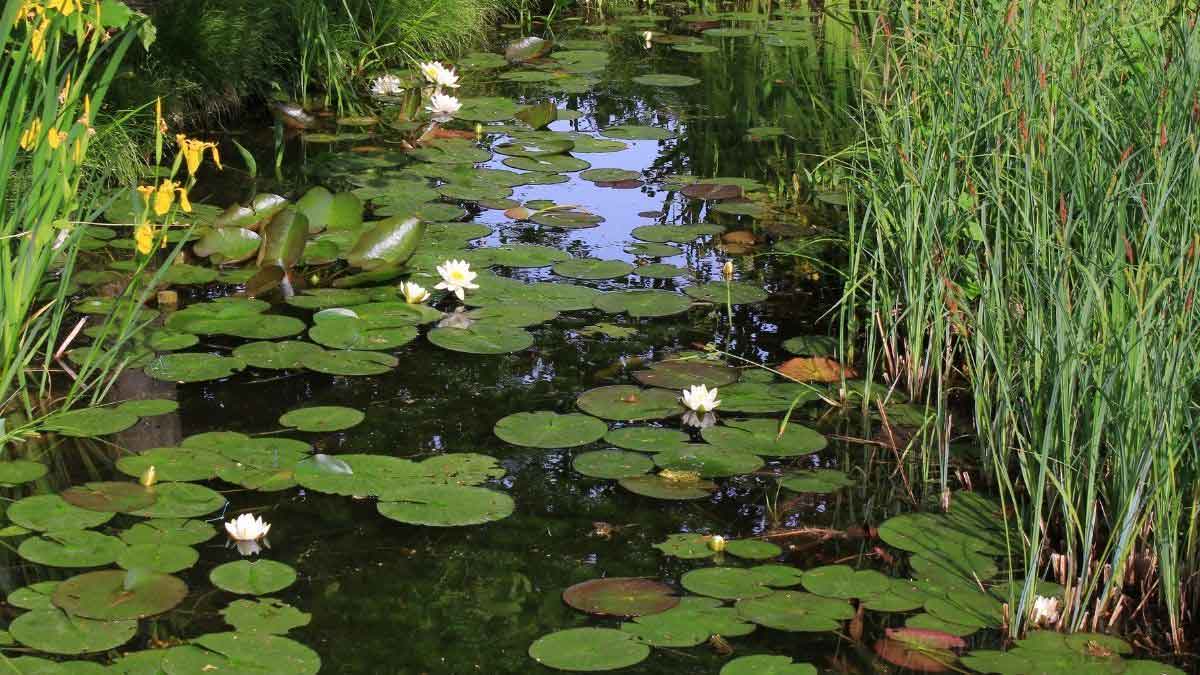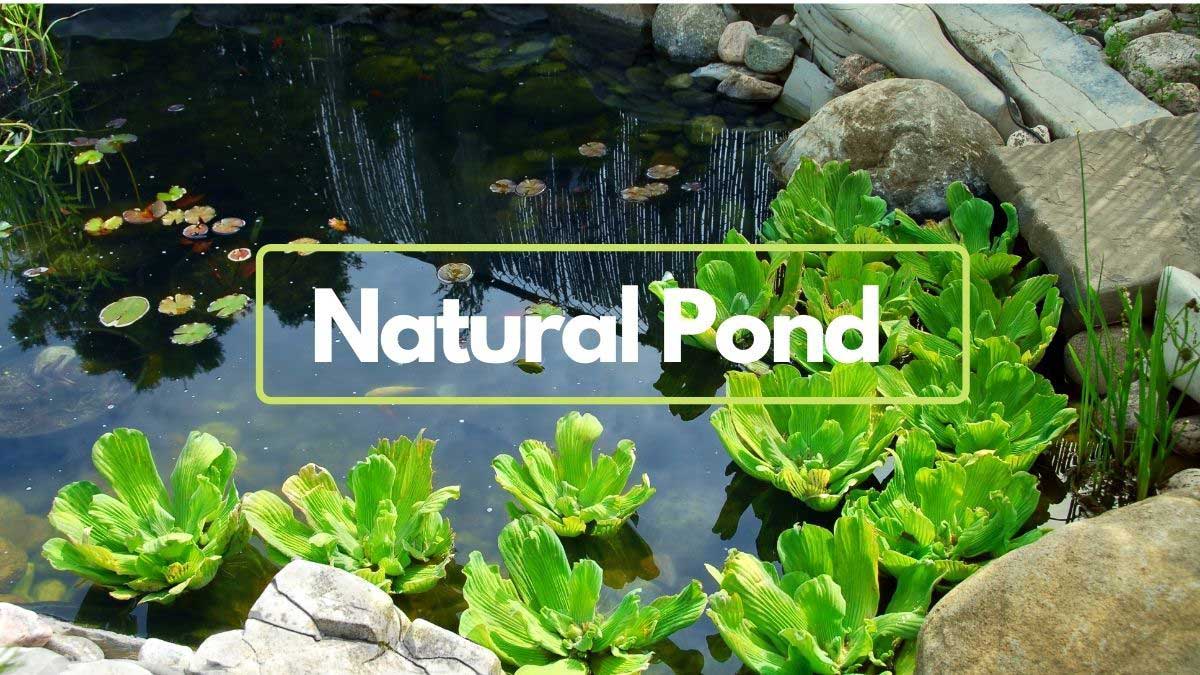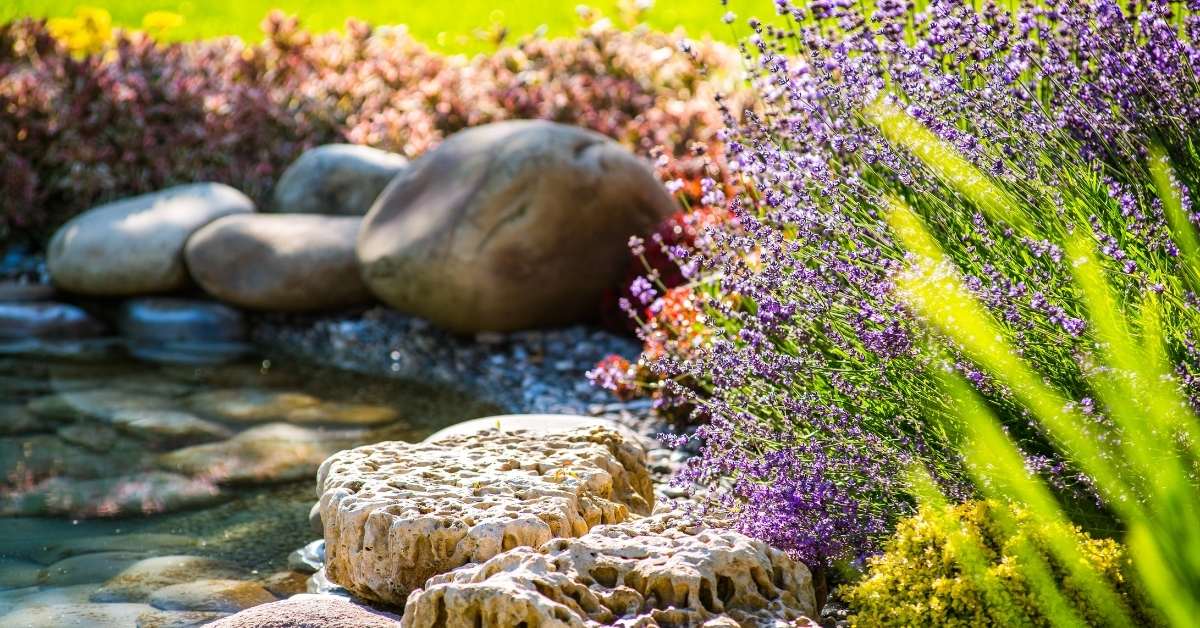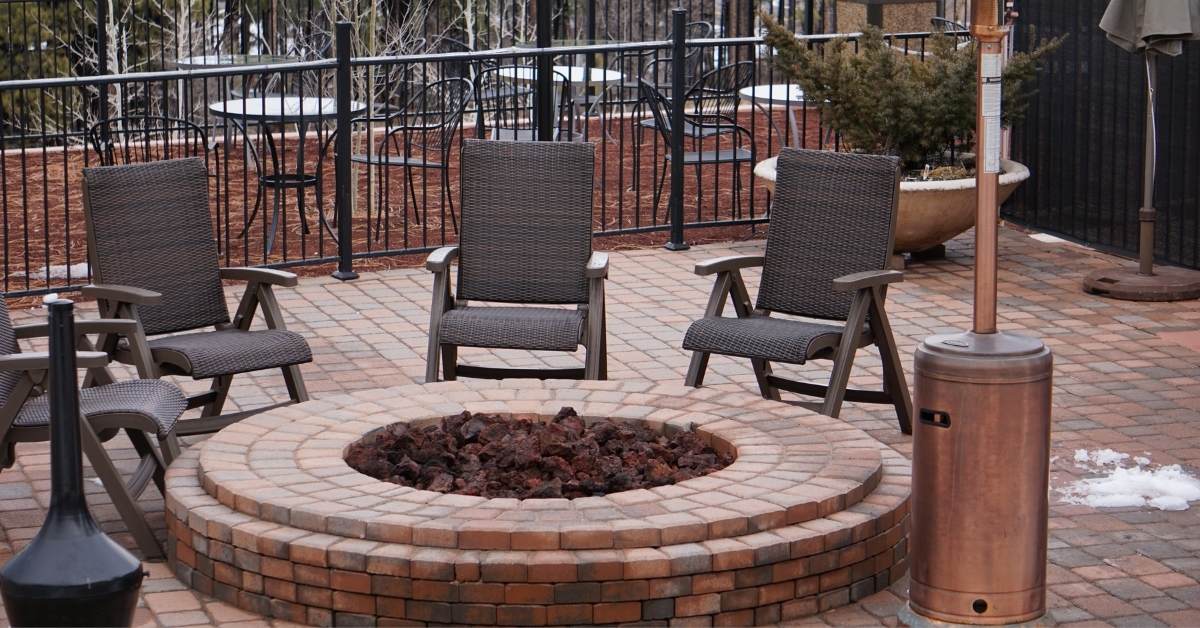More and more often, the trend is back to the “unspectacular” natural pond. This is by no means meant in a negative way; it simply describes the fact that such ponds blend into their surroundings and get by without a lot of frills.
Densely planted areas and a near-natural character are the essential features. Such a biotope is “self-sustaining”…
What this means is, without human intervention, a biological equilibrium is established with which all pond inhabitants can cope in the long term. Especially native amphibians and insects are often inhabitants of such a pond, but also native fishes can be found.
Basics for a natural pond
First, let’s look at the “gross” factors such as location, size, and pond depth. As a general rule, plenty of sunlight is vital for most plants, so there is a wider variety of sun-loving plants to choose from.
However, if the sun shines over the pond for around 10 hours a day, excessive algae blooms will quickly occur. About 6 hours is ideal, which does not necessarily have to include the blazing midday sun. Even for such “semi-shaded” natural ponds, there is still a wide range of beautiful and interesting plants, do not worry.
Now about the dimensions of the pond. As I said, such a technicals pond’s goal is that it should be self-supporting, and the water should not fluctuate too much.
This is most easily accomplished when the volume of water is significant. It will be more straightforward it is to maintain the excellent water values if the pond is larger. Therefore, the basic rule is to plan the pond as large as possible.

Plants in the pond
Natural ponds should be planted extensively. Plants act as oxygen producers and nutrient consumers, so they are in direct competition with the unloved algae.
Many plants, therefore, generally mean fewer algae. Consequently, you should especially go for plants that produce a lot of oxygen, and water lilies also do well in a natural pond. It’s ideally advised to be stick to native species when choosing plants, as these also have the most significant benefit for animals.
When placing the plants, you can either use plant baskets or use loamy sand on the terraces. It would help if you let free the bottom of the substrate’s pond as much as possible; this will make later cleaning work and mud removal much more accessible.
Caring the pond
Although your pond is natural and does not require any technical equipment, you should still carry out specific maintenance tasks. Parts of dead plants need to be cut, some plant bases thinned, and leaves need to be fished from the pond.
If the trees are near the pond, you should consider putting up a net to protect the leaves. Otherwise, there is a risk of forming too much organic material in the pond in the fall and winter, reversing the spring’s entire pond. Therefore, ideally, remove mud from the bottom of the pond in the spring.
Animals living in the pond
Here we come to quite an exciting topic, which at a certain point generates controversial opinions among many pond owners.
First, however, everyone agrees that domestic insects and amphibians are beneficial and welcome. These come into the pond 99% of the time without your intervention. They arrived by chance or stayed where they liked and disliked. Especially zooplankton-like water fleas are valuable helpers in pond cleaning.
Now for the point of contention: fish stocking. Many pond owners find their ponds beautiful and comfortable without fish, but some argue hard to store them. If you count to the last group, there are some points to consider.
One has to start with some animals and leave them to their own devices for a while at that moment. This works best for native varieties like Moderlieschen and minnow. However, when leaving them to their own devices, you must be aware that the fish will decimate the population themselves.
This includes eating their own young and starving to death if there is overpopulation. This may sound cruel for some people, but it is normal, and the balance between fish and food supply is self-correcting.
If you don’t want this “cruel” natural process in your own pond, you either have to leave the fish out or buy filter technology. By the way, you should not feed the fish additionally (without filter operation): Firstly, fish food is a super algae fertilizer. Secondly, the fish will then multiply more, and there will be overpopulation.
It is best not to introduce fish until the pond is well anchored and enough “food” is stored in the pond. Sometimes this can take a long time; several months or even a perfect year.
Finally, you should refrain from using burrowing fish: These stir up the soil, and thus more nutrients get into the water, which can lead to algae growth.


